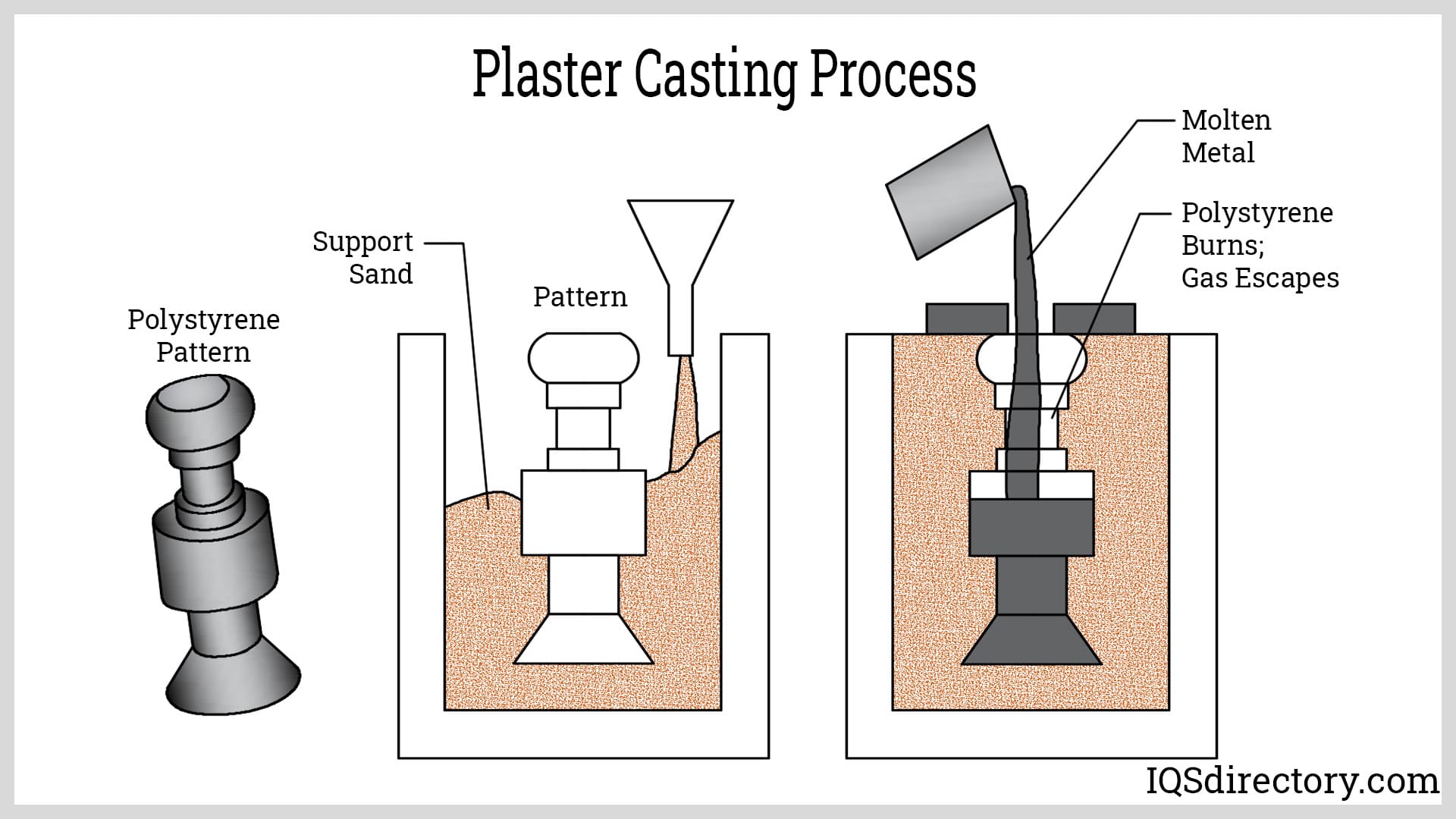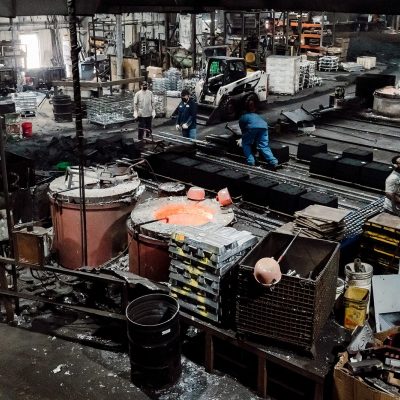Comprehending the Steel Castings Refine: A Comprehensive Guide for Beginners
The Metal Casting procedure is a basic strategy in producing that changes molten metal right into solid types. Novices need to realize the different techniques entailed, such as sand casting and pass away casting. Understanding the materials, style concepts, and precaution is similarly essential. Each element plays a critical duty in attaining successful outcomes. As one browses these complexities, the concern of how to optimize each action for enhanced outcomes becomes increasingly important.
The Essentials of Metal Casting
Metal Casting has actually evolved over centuries, its basic concepts stay indispensable and regular to the manufacturing procedure. At its core, Metal Casting includes the improvement of liquified metal right into solid objects through different techniques. The process begins with the production of a mold and mildew, which defines the form of the last product. As soon as the mold is prepared, metal is heated to its melting point and put into the dental caries. After cooling, the metal solidifies, taking the shape of the mold.
There are a number of casting approaches, including sand casting, investment spreading, and die casting, each with distinct advantages and applications. The choice of technique depends upon variables such as manufacturing volume, material type, and desired accuracy. When cast, the final product may undertake additional processes like machining or surface area treatment to accomplish the called for surface and requirements. Comprehending these essentials is important for anybody thinking about the area of Metal Casting.

Understanding Materials Utilized in Steel Casting
Products play a vital role in the Metal Casting procedure, affecting the end product's residential properties and efficiency. Various metals are used, consisting of light weight aluminum, iron, bronze, and steel, each offering distinctive qualities matched for certain applications. Aluminum is corrosion-resistant and light-weight, making it excellent for auto parts. Iron, specifically cast iron, is preferred for its outstanding wear resistance and toughness. Steel gives high strength and versatility, frequently made use of in heavy equipment components. Bronze, known for its corrosion resistance and machinability, is frequently used in marine applications.
In addition to the steels, numerous casting materials, such as sand, plaster, and ceramic, are utilized to develop mold and mildews. Sand casting, one of the most prevalent approach, makes use of silica sand due to its thermal stability and ability to create elaborate shapes. Plaster and ceramic molds supply finer details but may require more complicated processes. The selection of products directly impacts the efficiency, cost, and top quality of the spreading operation.
The Design Process: From Concept to Blueprint
The design procedure in Metal Casting starts with the preliminary concept development, where ideas are generated and evaluated. This is followed by the application of CAD modeling techniques, permitting exact visualizations of the design. The blueprint finalization actions assure that all specifications are properly documented for manufacturing.
Preliminary Concept Advancement
Initial principle advancement notes a critical stage in the Metal Casting procedure, where concepts transform right into concrete styles. Throughout this phase, designers team up with engineers and stakeholders to brainstorm and improve initial concepts. They think about factors such as performance, aesthetics, and manufacturability, making sure that the style meets the called for requirements and efficiency requirements. Sketches and outlines are created to visualize the ideas, permitting initial evaluations of feasibility and cost-effectiveness. This stage likewise includes determining materials and potential spreading approaches that line up with the layout goals. Inevitably, initial idea growth lays the groundwork for a detailed blueprint, assisting the succeeding phases of the casting procedure and guaranteeing a successful change from concept to reality.
CAD Modeling Techniques
Changing ideas into exact layouts, CAD modeling techniques play a crucial role in the Metal Casting process. These techniques make use of innovative software to create detailed three-dimensional models that properly reflect the designated item. By using tools such as parametric modeling, solid modeling, and surface modeling, designers can manipulate dimensions and shapes easily. CAD systems additionally assist in simulation and analysis, enabling the recognition of prospective defects prior to manufacturing begins. This aggressive method decreases material waste and maximizes the layout for manufacturability. In addition, CAD versions can be easily customized, allowing quick iterations based on comments. Essentially, CAD modeling works as the backbone of the style process, linking the void between preliminary concepts and the eventual production-ready designs.
Blueprint Completion Tips
Adhering to the creation of detailed CAD versions, the next stage includes blueprint completion, which is vital in converting digital styles into workable plans for manufacturing. This procedure starts with assessing the CAD versions for accuracy and compliance with specs. As soon as verified, the measurements, tolerances, and product specs are carefully detailed to assure clarity. Incorporating notes and notes helps connect necessary information concerning spreading procedures, surface coatings, and setting up demands. The wrapped up blueprint undergoes a web link rigorous approval process, commonly entailing cooperation with designers and production groups to attend to any kind of potential problems. After all alterations are made and authorizations gotten, the blueprint is officially launched, offering as the foundational document for the subsequent phases of Metal Casting, consisting of pattern production and mold and mildew style.
The Steel Casting Strategies Discussed

Metal Casting techniques encompass a selection of techniques utilized to shape liquified steel into desired types. These techniques vary according to the kind of product, intricacy of the style, and production volume. Sand casting is just one of one of the most usual techniques, including the development of a mold and mildew from sand to hold the molten steel. Investment casting, or lost-wax spreading, permits detailed designs by utilizing a wax pattern that is disappeared. Die casting employs high-pressure shot of molten steel right into a mold and mildew, suitable for automation. Other approaches consist of irreversible mold spreading, which uses recyclable molds, and centrifugal casting, where rotational pressures help in filling the mold and mildew. Each technique has its benefits and applications, making it important for manufacturers to pick the ideal approach based on their certain needs and demands. Understanding these strategies is essential for any individual associated with the Metal Casting procedure.
Ending Up Processes: Enhancing Your Casted Item
Completing procedures play a necessary duty in boosting the quality and appearance of casted items. Numerous surface area therapy strategies, such as sprucing up and covering, are utilized to boost sturdiness and appearances. Additionally, quality examination techniques ensure that the end product satisfies specified requirements and efficiency needs.
Surface Therapy Techniques
A range of surface area therapy techniques play a necessary function in improving the top quality and long life of casted products. These methods consist of approaches such as shot blasting, polishing, and finish. Shot blasting properly removes surface area imperfections, boosting the visual and functional features of the casting. Sprucing up offers a smooth finish, which is particularly crucial for ornamental applications and components requiring marginal rubbing. Finishing strategies, such as electroplating or powder finish, offer added security against deterioration and wear, guaranteeing sturdiness. Furthermore, surface area treatments can boost adhesion for succeeding procedures, such as paint or bonding. By utilizing these techniques, manufacturers can achieve remarkable surface top quality, which is critical for the efficiency and lifespan of Metal Casting in various applications.
Top Quality Evaluation Methods
Efficient top quality examination methods are important for assuring the integrity and efficiency of casted items after the completing procedures. Numerous methods are utilized to assess the quality of Metal Casting, consisting of aesthetic evaluation, dimensional checks, and non-destructive screening (NDT) Aesthetic assessment enables the identification of surface defects, while dimensional checks guarantee that products satisfy specified resistances. NDT approaches, such as ultrasonic testing and radiographic assessment, provide much deeper insights into internal integrity without damaging the castings. In addition, mechanical testing, such as tensile and solidity tests, check my blog reviews product residential or commercial properties - Aluminum Castings. By using a combination of these methods, suppliers can enhance product high quality and reliability, inevitably bring about greater consumer complete satisfaction and minimized manufacturing costs
Safety And Security Considerations in Metal Casting
While the Metal Casting procedure offers many advantages, it likewise offers a variety of security hazards that need to be thoroughly taken care of. Workers in casting centers are subjected to heats, liquified metals, and unsafe materials, which can result in extreme injuries if appropriate safety measures are not taken. Individual safety tools (PPE) such as heat-resistant handwear covers, deal with shields, and safety apparel is vital to reduce threats.
Additionally, the existence of fumes and dust necessitates correct air flow systems to guarantee air quality - Wisconsin Aluminum Foundry. Routine training on safety methods is important for all staff members to identify prospective dangers and react effectively. Emergency procedures should be established, consisting you could try here of fire safety and security measures and very first aid accessibility. Maintenance of devices and proper handling of materials even more contribute to a much safer working setting. By prioritizing these safety and security factors to consider, Metal Casting procedures can protect their labor force and preserve efficient production procedures
Regularly Asked Inquiries
What Are the Environmental Influences of Metal Casting?
Metal Casting can lead to environmental influences such as air and water contamination, resource deficiency, and power usage. Additionally, improper waste monitoring and discharges from factories add to ecological disturbances and health threats for close-by neighborhoods.
How Do I Select the Right Metal for Spreading?
To select the appropriate metal for casting, one have to think about elements such as mechanical buildings, deterioration resistance, thermal conductivity, and price. Reviewing the desired application and environmental problems is vital for ideal choice.
What Are the Common Issues in Metal Casting?
Usual defects in Metal Casting consist of porosity, shrinking, sand incorporation, and misruns. These problems frequently develop from incorrect product choice, insufficient layout, or flaws in the spreading procedure, influencing the final product's quality and performance.
Exactly How Can I Enhance My Metal Casting Skills?
To enhance Metal Casting skills, one should exercise continually, research spreading methods, examine previous jobs for problems, look for comments from experienced casters, and continuously trying out different products and approaches to improve effectiveness and understanding.
What Is the Expense of Starting a Steel Casting Business?
Beginning a metal casting company commonly needs a first investment of $5,000 to $50,000, depending upon tools, materials, and facility costs. Variables like place and range can significantly affect total start-up expenses.
The Metal Casting process is an essential technique in making that changes molten metal right into solid forms. Newbies should comprehend the various approaches involved, such as sand casting and pass away casting. There are a number of casting approaches, including sand spreading, investment casting, and pass away casting, each with unique benefits and applications. Financial investment spreading, or lost-wax casting, permits for intricate designs by utilizing a wax pattern that is melted away. Various other methods consist of long-term mold and mildew casting, which uses multiple-use mold and mildews, and centrifugal spreading, where rotational pressures help in filling up the mold and mildew.